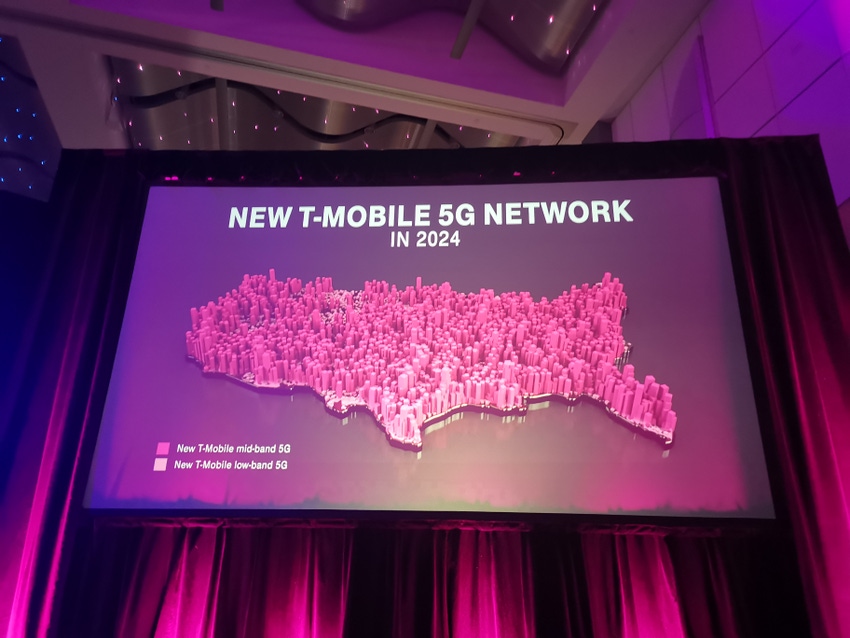Closure of Sprint 4G network probably not a big deal to T-Mobile US
When T-Mobile US published its Q2 results last week it once again talked up the progress it is making in integrating Sprint and upgraded its merger synergies guidance for the second consecutive quarter. But it didn't think to mention its plans for closing down Sprint's LTE network next summer; it took the eagle eyes of LightReading to notice it had sneaked that piece of information onto its Website.
August 6, 2021

When T-Mobile US published its Q2 results last week it once again talked up the progress it is making in integrating Sprint and upgraded its merger synergies guidance for the second consecutive quarter. But it didn’t think to mention its plans for closing down Sprint’s LTE network next summer; it took the eagle eyes of LightReading to notice it had sneaked that piece of information onto its Website.
Having spotted that T-Mobile has updated its merger information page to reveal that it intends to retire the Sprint LTE network on 30 June 2022, the publication contacted the operator to confirm. The information is correct.
In a way, it’s not newsworthy; closing down Sprint’s infrastructure was always part of the plan when T-Mobile swallowed up its rival for US$26 billion last summer. But it is important information for a fair few former Sprint customers who might now need new handsets in the next 11 months. It also comes shortly after T-Mobile found itself in a public spat with Dish Network over the closure of its CDMA-based 3G network, which serves several million of the customers it gained via the acquisition of Boost Mobile from Sprint as part of the merger agreement with regulators.
“Unfortunately, a majority of our 9 million Boost customers (many of whom face economic challenges) have devices that rely on Sprint’s CDMA network and will be harmed if T-Mobile prematurely shuts down that network,” Dish Network said in a filing with the FCC in April.
A fortnight ago Dish revealed it has signed an MVNO deal with AT&T worth $5 billion over 10 years that will see it move many of its customers – from Boost Mobile and other sub-brands – onto the AT&T network, as well as roaming on the latter’s 5G infrastructure in areas where it does not have its own coverage, when the time comes.
In the case of the Sprint network there will be no backlash from a disgruntled operator, although a sizeable number of ex-Sprint customers might well be less than impressed.
In its second quarter report T-Mobile noted that it now carries around 80% of Sprint customer traffic on its own network and has migrated about a third of those ex-Sprint customers. It doesn’t take a maths whizz to work out that that leaves two thirds of Sprint customers, accounting for just 20% of traffic, still on the old infrastructure. And it’s not too much of a stretch to suggest that these are not high-value customers for T-Mobile, and therefore it will not lose a lot of sleep if some of them vote with their feet and seek out a new provider once their old handsets stop working next summer.
Funnily enough, that’s not exactly T-Mobile’s public message on the matter though.
“To ensure all customers can enjoy a more advanced 4G and 5G network, we will be retiring older network technologies to free up resources and spectrum that will help us strengthen our entire network, move all customers to more advanced technologies and bridge the Digital Divide. An additional part of this effort involves moving Sprint’s LTE spectrum to the T-Mobile network,” the telco declares.
“Moving customers who are on old networks onto modern, advanced high-speed networks means they will need to have phones and devices that can tap into the latest technologies and don’t rely on older ones,” it admits. “We’ll ensure that we support our customers and partners through the transition. We began sending notifications late last year, and everyone who needs to act will be given advanced notice and hear directly from T-Mobile.”
So, fear not, onetime Sprint customers: T-Mobile will warn you before it cuts you off.
Being completely fair to T-Mobile, refarming spectrum for new generations of mobile technology is hardly a new idea and many, if not all, telcos are at it as 5G rollouts gather pace. T-Mobile also plans to retire its own 2G and 3G networks, although as yet “no date has been set,” it says.
Further afield, last month BT’s EE unit revealed it will close down its 3G infrastructure by 2023, as did T-Mobile’s Polish business, to name just two examples. 3G networks were never going to be around for ever. Retiring legacy infrastructure is an obvious thing to do. It doesn’t mean customers won’t be annoyed though…or at least some of them.
Get the latest news straight to your inbox. Register for the newsletter now
About the Author(s)
You May Also Like











_1.jpg?width=300&auto=webp&quality=80&disable=upscale)


.png?width=800&auto=webp&quality=80&disable=upscale)